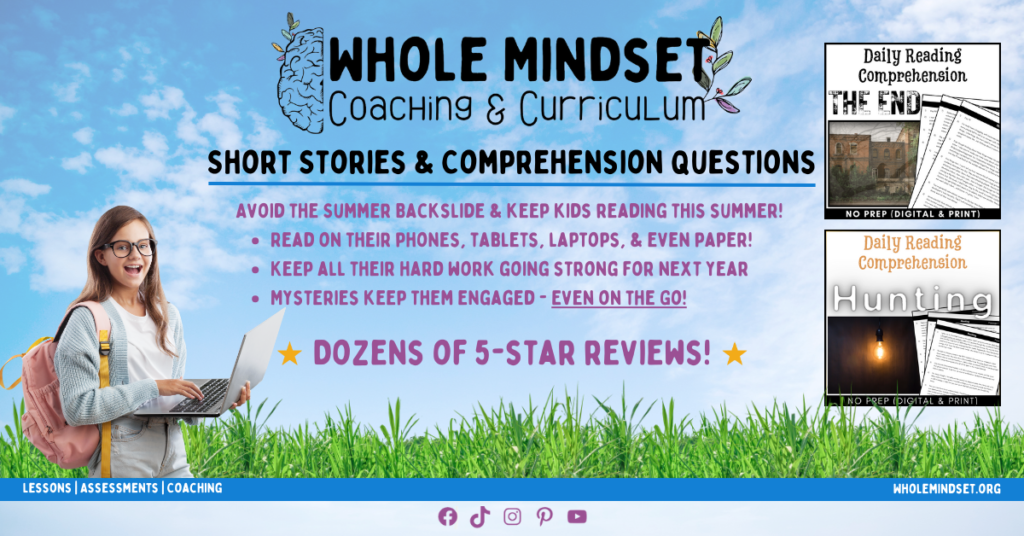Your cart is currently empty!
Lists and Social Emotional Learning
There are times when making a decision can feel overwhelming to the point it causes us to freeze up. This is not only reserved for huge life decisions. Day-to-day choices require a lot from us. The social-emotional learning (SEL) process begins with awareness, progresses to understanding, and ultimately reaches application. But how do we navigate our way through all of that? Lists are a great place to start!
Think of lists as another tool we can give our students for their ever expanding toolboxes. When thinking specifically about responsible decision-making, we need to help students not only be aware of the decisions ahead of them, but also help them understand the impact their choices make now and later. Once this is accomplished, they can confidently apply this knowledge to the decisions they face each day. Students would benefit from opportunities to try each type of list throughout their education to resolve a variety of scenarios. These can be real scenarios they are actually facing, or teachers can create funny fictional ones so students have fun while they practice.
Decision Tree (sometimes called a Logic Tree)
This list style begins with specifying the problem, then examining all of the possible solutions, then looking deeper at how realistic or doable those solutions are. Ultimately, the best solution will stand out. Below is an example of what the tree looks like using an example our students might actually be facing; what to do after high school.
Please keep in mind that my example here is minimal and does not go into detail, it is merely to give you an idea what this list style can look like.
This list can identify values and concerns such as the time it will take or what it will cost (both of which are listed multiple times). But notice only one listed “experience.” That may help the student see that yes, that option is the best because nothing else has that.
These decision trees can be very subjective and students should be free to fill them in how they please. Encourage them to keep adding details, positives and negatives of each, and remember to look beyond just this moment but ahead to life after that decision has been made.
Decision Matrix
The next list type is a decision matrix. This is similar to the tree, but in a more unified layout which can appeal to learners that like more structure. It also applies quantitative values to each criteria being considered. Again, this could be far more detailed, but you get the idea.
Students will each have subjective values and criteria they want to consider, but even here there is a clear winner – attending college.
Pro / Con List
The next list type is the old stand-by, the pro/con list. There is little explanation needed here as this type of list is so commonly used. That status however, does make it a great introduction to list making. Students can be asked about its strengths and weaknesses which can open the conversation to these other list types. Students will start to see the benefits and be able to expand their decision-making beyond just pro or con.
SODAS
The next list type is SODAS (situation, options, disadvantages, advantages, solution). This type of list is almost a perfect thought cycle as you walk through a decision from choice to solution.
ICED
Lastly, there is ICED. Not iced like my summer lattes, iced as in Identify the problem, Create alternatives, Evaluate those alternatives, and Decide on the best option.
As you can see, this is very similar to a decision tree. Sometimes labels help clarify the process though.
All the labels, colors, and layouts won’t make a difference to students if they can’t apply them to real world issues. In some of my reading comprehension lessons, the characters are faced with big decisions. The accompanying assignments ask students what they would do, how they would decide… These are great opportunities for students to explore different list types, but also have conversations afterwards about which list worked and why. What list would they use next time? Did they think it helped them… Basic round table conversation that helps open dialogue between students. It also helps them recognize when and how list making could help them in the future.
Of course there are MANY types of lists to choose from, there are even apps for it (shock and surprise). But what is really cool is that making lists that are helpful actually releases chemicals in the brain that ease anxiety. How cool is that?!
For activities that incorporate SEL and reading comprehension, check out my shop. These activities are great for ELL students, middle school students, and emerging or reluctant readers.
For freebies and a free copy of one of my best-selling lessons, just click here. The Whole Mindset newsletter is 100% spam free!


